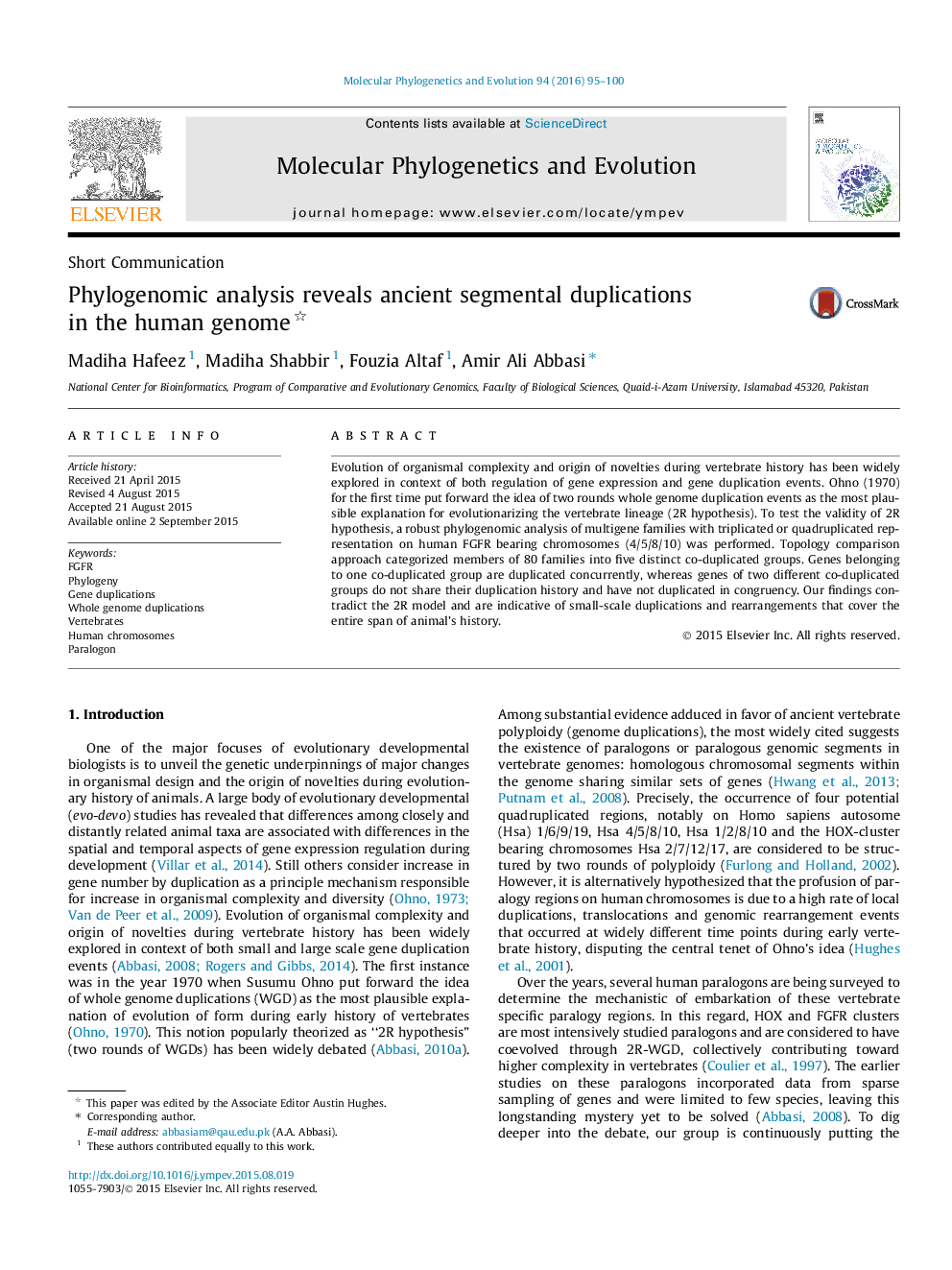| Article ID | Journal | Published Year | Pages | File Type |
|---|---|---|---|---|
| 5918755 | Molecular Phylogenetics and Evolution | 2016 | 6 Pages |
â¢Evolutionary history of human FGFR-bearing paralogon was investigated.â¢Phylogenies of 80 gene-families by employing sequences from diverse animal species.â¢Results corroborate that small-scale duplications structured human FGFR-bearing paralogon.â¢These regional duplications occurred at different time points in animal history.â¢These data contradict the assumption of WGDs at the root of vertebrate lineage.
Evolution of organismal complexity and origin of novelties during vertebrate history has been widely explored in context of both regulation of gene expression and gene duplication events. Ohno (1970) for the first time put forward the idea of two rounds whole genome duplication events as the most plausible explanation for evolutionarizing the vertebrate lineage (2R hypothesis). To test the validity of 2R hypothesis, a robust phylogenomic analysis of multigene families with triplicated or quadruplicated representation on human FGFR bearing chromosomes (4/5/8/10) was performed. Topology comparison approach categorized members of 80 families into five distinct co-duplicated groups. Genes belonging to one co-duplicated group are duplicated concurrently, whereas genes of two different co-duplicated groups do not share their duplication history and have not duplicated in congruency. Our findings contradict the 2R model and are indicative of small-scale duplications and rearrangements that cover the entire span of animal's history.
Graphical abstractDownload high-res image (216KB)Download full-size image
